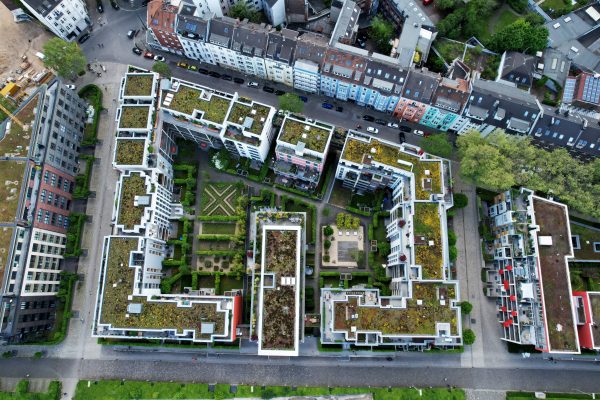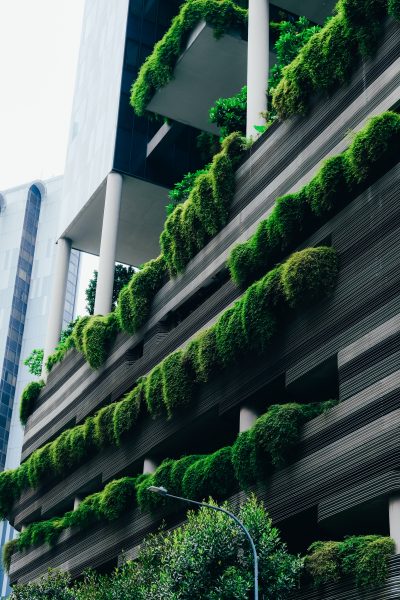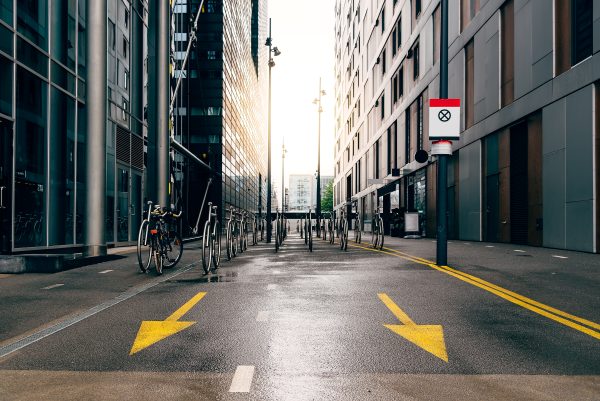In the bustling heart of every city lies the potential for transformation. Urban landscapes, once dominated by concrete jungles and steel structures, are now with a new vision. This new vision blends with nature, promotes sustainability, and cares for communities. Additionally, the world is now grappling with pressing environmental challenges. Therefore, the need to create urban spaces with sustainable design has never been more urgent. From green roofs and vertical gardens to renewable energy systems and pedestrian-friendly streets, the possibilities for improving our cities are as vast as they are inspiring. What’s more, urban spaces with sustainable designs don’t only have psychological benefits to the people in the community. They also benefit the economy with a study showing that the addition of even a modest amount of green space resources led to a 7% increase in residential property values.
At the core of sustainable urban design lies the principle of integration. Natural elements, technological innovations, and community needs are now integrated. Gone are the days when cities were solely defined by their towering skyscrapers and expansive roadways.
With that said, BizForce’s architects are leading the charge in weaving lush green spaces into the urban landscape. Through our architects’ visionary designs, neglected corners are rejuvenated, transforming into vibrant havens of serenity within bustling metropolises.
Green Roof

One of the most iconic symbols of sustainable urban design is the green roof. Beyond its aesthetic appeal, a green roof serves as a powerful tool to lessen the urban heat island effect. It reduces energy consumption and improves air quality. By covering rooftops with vegetation, cities can effectively combat the heat trapped by concrete and asphalt. Furthermore, it creates microclimates that offer relief during scorching summers. Green roofs act as natural insulators. Thus, there’s a reduced need for artificial cooling systems, lowering carbon emissions. It’s a win-win for both the environment and city dwellers.
Vertical Gardens

In addition to green roofs, vertical gardens have emerged as a creative solution for maximizing green space in densely populated urban areas. From the exterior walls of high-rise buildings to the interiors of subway stations, vertical gardens infuse urban landscapes with lush foliage. Therefore, mundane structures are turned into living works of art. Moreover, not only do these green installations enhance the visual appeal of the city, but they also provide habitat for wildlife, improve air quality, and promote biodiversity. These are essential components of resilient ecosystems.
Renewable Energy Systems
However, sustainable urban design extends beyond the realm of green infrastructure to encompass energy-efficient buildings, renewable energy systems, and smart technologies. From passive solar design principles that harness the sun’s energy for heating and lighting to innovative building materials that minimize environmental impact, architects and engineers are pioneering new ways to construct buildings that tread lightly on the planet. Therefore, the integration of renewable energy systems such as solar panels, wind turbines, and geothermal heat pumps into urban landscapes. It offers a pathway towards energy independence and carbon neutrality. This is a crucial step in combating climate change.
Complete Street

Yet, perhaps the most transformative aspect of sustainable urban design lies in its ability to foster social cohesion and community well-being. Therefore, by prioritizing walkability, cycling infrastructure, and public transportation, cities can reduce reliance on cars. Additionally, cities can alleviate traffic congestion and promote healthier lifestyles. Moreover, the creation of pedestrian-friendly streets, parks, and plazas provides opportunities for social interaction, cultural exchange, and recreation, strengthening the social fabric of urban communities.
Indeed, the concept of the “complete street” embodies the holistic approach to urban design. It is where streets are designed to accommodate pedestrians, cyclists, public transit users, and motorists alike. By prioritizing safety, accessibility, and inclusivity, complete streets not only enhance mobility. They also promote equity and social justice. These are fundamental aspects of sustainable urbanism. Moreover, the incorporation of public art, street furniture, and interactive installations adds a sense of identity and belonging to urban spaces. They foster a deep connection between residents and their environment.
Conclusion
As we look towards the future, the need to embrace sustainable urban design has never been clearer. With rapid urbanization and population growth placing unprecedented strain on resources and infrastructure, cities must rise to the challenge of creating livable, resilient, and inclusive urban environments. Therefore, by integrating principles of sustainability, resilience, and equity into every facet of urban planning and design, we can build cities that endure the test of time and thrive in harmony with nature and humanity.
In conclusion, improving urban spaces with sustainable design is not merely an aspiration. Instead, it is also a need for the well-being of current and future generations. From green roofs and vertical gardens to energy-efficient buildings and complete streets, the path towards sustainable urbanism is multifaceted and dynamic. By embracing innovation, collaboration, and community engagement, we can unlock the full potential of our cities, without a doubt. Our cities become vibrant, resilient, and sustainable hubs of human civilization. Together, let us embark on this journey towards a greener, more equitable future—one urban space at a time.
Work with BizForce’s architects today. Contact us here.
